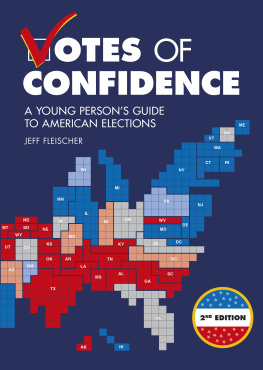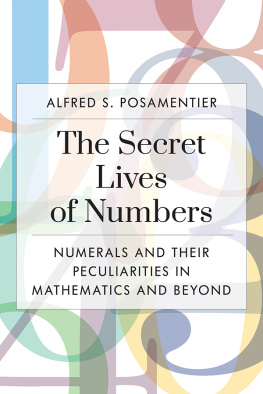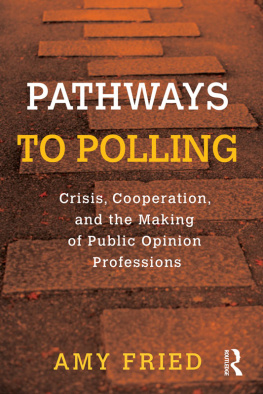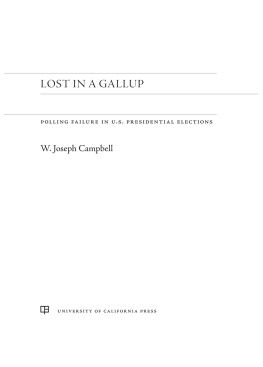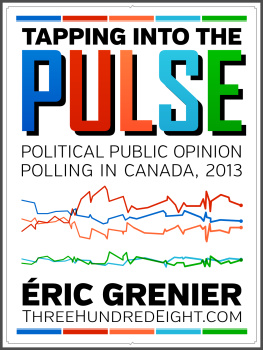Thank you for downloading this Simon & Schuster ebook.
Get a FREE ebook when you join our mailing list. Plus, get updates on new releases, deals, recommended reads, and more from Simon & Schuster. Click below to sign up and see terms and conditions.
CLICK HERE TO SIGN UP
Already a subscriber? Provide your email again so we can register this ebook and send you more of what you like to read. You will continue to receive exclusive offers in your inbox.
We hope you enjoyed reading this Simon & Schuster ebook.
Get a FREE ebook when you join our mailing list. Plus, get updates on new releases, deals, recommended reads, and more from Simon & Schuster. Click below to sign up and see terms and conditions.
CLICK HERE TO SIGN UP
Already a subscriber? Provide your email again so we can register this ebook and send you more of what you like to read. You will continue to receive exclusive offers in your inbox.
To Aidan and Theo
Chapter One
The Seen and the Unseen
At 2:52 a.m. on Election Night at the CBS News Decision Desk, I reached for the intercom button with my left hand and told the broadcasts control room we were ready.
What had once seemed unlikely was now certain.
I was staring at big monitors filled with numbers, at vote reports coming in from Pennsylvania: the polls had closed seven hours ago and Donald Trump and Hillary Clinton were still less than a point apart. We werent really sure those reports were finished, but now we knew wed seen enough of them; enough to know for sure what was happening.
Figuring out just what enough is, thats always the hard part on nights like this.
With my right hand I pulled up a small menu on the screen and then a little gray box thats been deliberately tucked away, in a spot where it can only be pushed on purpose. It has the W in itfor Win.
Were calling Pennsylvania for Trump, I said into the headset. My click signaled graphics to light up the state in red on the big U.S. map, it sent the states electoral votes over into the Republican column, and pushed Trumps count over the 270 he neededwhich is why wed been so focused on Pennsylvania for the last hour. I need to be right on every call, but I really need to be right on the one that decides everything.... and projecting the presidency with it, I followed. Donald Trump, elected.
The name Decision Desk is newsroom slang for whats really a long U-shaped set of tables behind the anchors here in CBSs Studio 57, the hub of our Election Night coverage. If you watch the show you can see those tables stacked with computers and the monitors that were squinting at all night, as data feeds stream in with vote results from every corner of the country. Theres a big lighted sign hanging over it that reads Decision and from here my small cadre of pollsters and professors and I call the races for the network: whos leading, whos trailing, who wins, and who loses across fifty states, hundreds of contests, 130 million votes. There were times in past years when the Desk was hidden out of sight in a different room with no cameraslet alone any big lighted signsand known only by its proclamations of who won. But I love that were out here in the main studio where the viewers can see and hear from us as the night rolls along. These are, after all, their votes were looking at.
In Studio 57 there is no offstage: the anchors sit at a round glass table in the center; there are producers around the perimeter typing and talking softly but urgently; robotic cameras whirling remotely and black-clad cameramen with Steadicams pointing from place to place; giant screens, floor to ceiling, are alight with the red and blue vote map; live streams with remote views of cheering crowds at some campaign headquarters and sunken faces at others; displays flashing Twitter feeds scrolling past too fast to read.
For eight straight hours that had all been a swirl of kinetic energy but now, at this moment, nearly 3 a.m. and the presidency decided, it slows a bit and the focus shifts elsewhere: Donald Trump is at a podium in New York addressing his supporters.
I took off the headset and stepped back from the desk. After we call a presidential race, I always try to take a moment and recognize the history weve just seen, whoever wins. On the exposed-brick wall next to us, the set designers had laid out old tchotchkes, campaign memorabilia, photos, all juxtaposed against our technology and those screens, reminders that the Decision Desk has a great history of its own. I have one shot of Walter Cronkite in 1968 in front of a board showing Richard Nixons and Hubert Humphreys vote counts; right next to my seat is another black-and-white photo of pinstripe-suited CBS staffers in the 1950s frantically tallying votes in chalk on a big blackboard. These are the traditions we follow even as the politics and the technology change through the years. The dress codes change, too, it occurs to me: those guys in the photo are still dutifully wearing their suits even amid the chalk smears, and at this point Im in rolled-up shirtsleeves, jacket off, tie down. I just pull the tie back up when I go on camera beside that big touchscreen to explain whats going onwhich Id done more of on this night than any before.
Tomorrow would be busy for me, too. Everyone would be trying to understand how Donald Trump had defied the expectations: the ones set by the pundits, the forecasters, and somethough hardly allof the polls. Wed just seen some of the answers as all those votes had poured in. At the Decision Desk, our job is to show you whats happening when you cant see everything; when you dont know every vote, or every county, or every person. But the numbers and the winners we light up are just the attention-grabbing parts at the end. The real discoveries come in trying to figure those numbers out in the first place.
This story begins with how we do that on Election Nights, and what this very late, very close one showed us.
Sunday, November 6, two days before Election Day
Two days earlier, on the weekend before Election Day, wed gathered in the studio to rehearse scenarios that might unfold that Tuesday night, kicking around ideas of what wed need to see to make a call in every state, and what wed say on air in each instance. Wed run all the anchors and producers through scenarios for both a Trump win and a Clinton win; what states might flip, what the timing might look like in either case.
In the newsroom someone asked me as we worked through the Trump scenario: Why does The New York Times say Clinton is going to win? The Times wasnt actually declaring her a winner at that point, of course. But the forecasts running on the papers website, which were trying to predict the contest in advance, did seem to us to be overconfident in Clinton, offering up assessments of her chances that most people would mistakenly interpret as certainties. On our Face the Nation program that Sunday, wed released our own final round of pre-election polls from the states of Ohio and Florida showing they were moving in Trumps direction. The national polls also had him closing the gap. And if all that was moving, other states we hadnt polled might be changing, as well. It couldnt be ruled out.
Id run into our chief White House correspondent, Major Garrett, a few days before that in the Green Room, the waiting area before we went on CBS This Morning . Major had spent the year covering the Trump campaign. I was planning to go on and describe a tough-but-doable Electoral College path for Trump that ran through the states of the Upper Midwest (which later turned out to be the one he took) or maybe Colorado (which he didnt). Id been describing Trump as down, but not out. I started bouncing that idea off Major, but he beat me to it. He could win, he said emphatically, noting the size and enthusiasm of Trump crowds hed seen in every venue at every hour of the day. I nodded. Neither of us thought that meant Trump would win, but we agreed the possibility was there.
Next page


